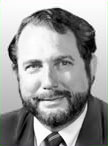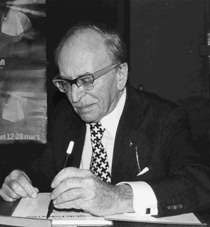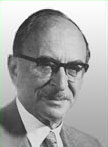security hologram Printing _ History of holograms
Home Secure Hologram sticker Hologram ID Overlay Hologram Pouch Hologram Hot Stamping
Scratch Hologram
Hologram Technology Contact us Why Hologram How to Make a Hologram
| What is Hologram | | Use of Hologram | | How is Hologram Made| | History of Hologram| | How to be Secure | | Design Artwork| | Master Origination| | Machine(Hologram Printer) Affordable| |
3D Hologram, Tamper Proof security hologram Stikers, Hologram stickers for authentication and Protection.
High security hologram : To combat counterfeiting, to authenticate products and to enhance brand image.
Secure Hologram & Hologram Security Features
Hologram Basic
The Hologram is based upon Nobel Prize winner Dennis Gabor's theory concerning interference patterns. Gabor theorized in 1947 that each crest of the wave pattern contains the whole information of its original source, and that this information could be stored on film and reproduced. This is why it is called a hologram.
Holography is the only visual recording and playback process that can record our three-dimensional world on a two-dimensional recording medium and playback the original object or scene, to the unaided eyes, as a three dimensional image. The image demonstrates complete parallax and depth-of-field. The image floats in space either behind, in front of, or straddling the recording medium.
History of Hologram Holography dates from 1947 , when British (native of Hungary) scientist Dennis Gabor developed the theory of holography while working to improve the resolution of an electron microscope.Gabor coined the term Hologram from the Greek words holos, meaning "whole," and gramma, meaning "message". Further development in the field was stymied during the next decade because light sources available at the time were not truly "coherent" (monochromatic or one-color, from a single point, and of a single wavelength). |
Dr. Dennis Gabor |
In 1962 Emmett Leith and Juris Upatnieks of the University of Michigan recognized from their work in side-reading radar that holography could be used as a 3-D visual medium. In 1962 they read Gabor's paper and "simply out of curiosity" decided to duplicate Gabor's technique using the laser and an "off-axis" technique borrowed from their work in the development of side-reading radar. The result was the first laser transmission Hologram of 3-D objects (a toy train and bird). These transmission Hologram produced images with clarity and realistic depth but required laser light to view the holographic image. |
 |
Their pioneering work led to standardization of the equipment used to make hologram. Today, thousands of laboratories and studios possess the necessary equipment: a continuous wave laser, optical devices (lens, mirrors and beam splitters) for directing laser light, a film holder and an isolation table on which exposures are made. Stability is absolutely essential because movement as small as a quarter wave- length of light during exposures of a few minutes or even seconds can completely spoil a hologram. The basic off-axis technique that Leith and Upatnieks developed is still the staple of holographic methodology. Also in 1962 Dr. Yuri N. Denisyuk from Russia combined holography with 1908 Nobel Laureate Gabriel Lippmann's work in natural color photography. Denisyuk's approach produced a white-light reflection Hologram which, for the first time, could be viewed in light from an ordinary incandescent light bulb. |
 |
Another major advance in display holography occurred in 1968 when Dr. Stephen A. Benton invented white-light transmission holography while researching holographic television at Polaroid Research Laboratories. This type of Hologram can be viewed in ordinary white light creating a "rainbow" image from the seven colors which make up white light. The depth and brilliance of the image and its rainbow spectrum soon attracted artists who adapted this technique to their work and brought holography further into public awareness. |
 |
In 1972 Lloyd Cross developed the integral Hologram by combining white-light transmission holography with conventional cinematography to produce moving 3-dimensional images. Sequential frames of 2-D motion-Sample footage of a rotating subject are recorded on holographic film. When viewed, the composite images are synthesized by the human brain as a 3-D image. In 70's Victor Komar and his colleagues at the All-Union Cinema and Photographic Research Institute (NIFKI) in Russia, developed a prototype for a projected holographic movie. Images were recorded with a pulsed holographic camera. The developed film was projected onto a holographic screen that focused the dimensional image out to several points in the audience. Holographic artists have greatly increased their technical knowledge of the discipline and now contribute to the technology as well as the creative process. The art form has become international, with major exhibitions being held throughout the world. |
 |
Company: Shanghai Henglei Hologram Co.,LTD(security hologram sticker Supplier)
Address: Room 3001, Building 9, Rui Hong xing cheng, #133 LinPing Bei Road, (Near Subway Line 4, Hualun Rd Stop),Shanghai City, 200086, China
Tel/Fax: 0086-21-61236144 (David song) Or please send email to Mr.song
E-mail: service@hlhologram.com
Contact Person: Mr.David Song(Marketing Manager)
E-mail:zxsong@hlhologram.com Davidsong968@hotmail.com
